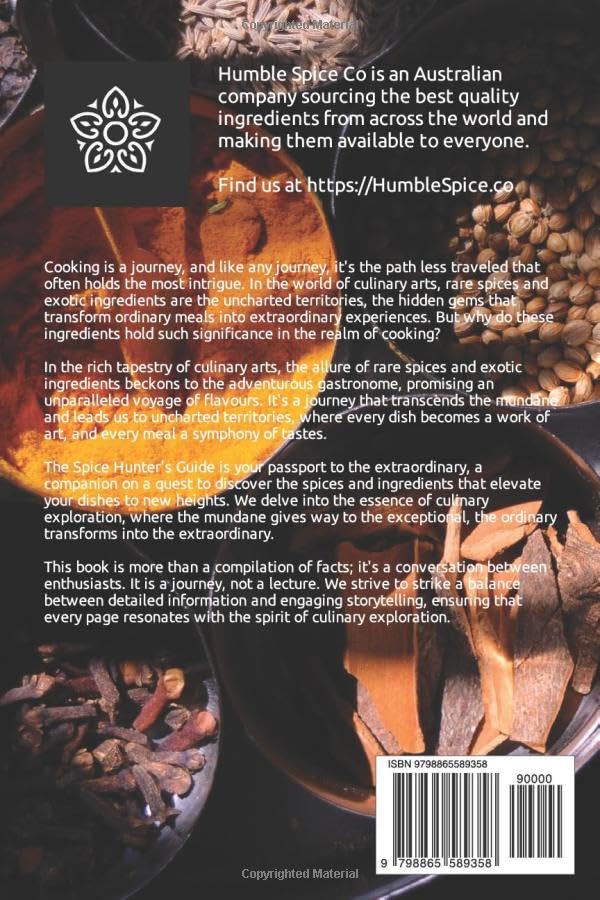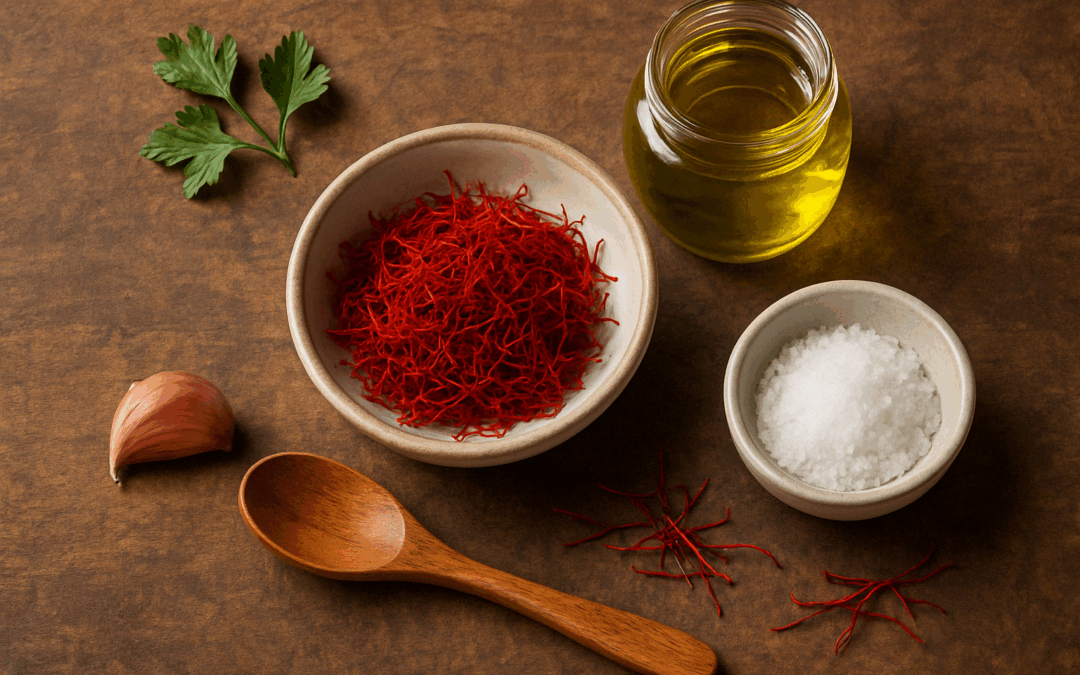
How to Use Saffron in Everyday Cooking
Saffron is one of the most luxurious and aromatic spices in the world. Harvested from the delicate threads of the Crocus sativus flower, it’s known for its vibrant golden color, floral fragrance, and subtle earthy-sweet flavor.
While it’s often associated with fancy dishes or special occasions, saffron can absolutely be used in everyday cooking to elevate your meals.
Here’s a simple guide to understanding and using saffron at home.
What Does Saffron Taste Like?
Saffron has a unique flavor that’s hard to pin down. It’s:
Because of its strength, a little goes a long way.
Buying and Storing Saffron
Buy whole threads (not powdered) for the best quality and potency. Look for deep red threads with minimal yellow or orange ends.
Store them in an airtight container in a cool, dark place—away from heat and light—to preserve flavor and color.
How to Prepare Saffron for Cooking
To get the most out of saffron, don’t just toss the threads into your dish. Here’s how to unlock its flavor and color:
-
Crush It: Use a mortar and pestle to grind a small pinch of threads.
-
Soak It: Add the crushed saffron to a tablespoon or two of warm water, stock, or milk. Let it steep for 10–20 minutes. This releases the color and aroma.
-
Add the Liquid: Pour the saffron infusion into your dish during cooking.
Easy Ways to Use Saffron in Everyday Dishes
You don’t have to be making paella or biryani to enjoy saffron. Try it in:
🥘 Rice Dishes
Add soaked saffron to plain rice for a golden, aromatic boost. Great with basmati, jasmine, or even risotto rice.
🍲 Soups & Stews
Stir saffron into broths, lentil soups, or chicken stews. It enhances depth and warmth.
🍝 Pasta & Cream Sauces
Infuse cream or butter with saffron and use it in pasta sauces, especially with seafood or mushrooms.
🐟 Seafood
Saffron complements shellfish and white fish beautifully. Add it to broths, marinades, or finishing sauces.
🥛 Warm Drinks & Desserts
Add saffron to milk or cream for lattes, custards, rice pudding, or even whipped cream.
Tips for Cooking with Saffron
-
Don’t overdo it. Just a few threads are enough for most dishes.
-
Pair it wisely. Saffron works well with ingredients like garlic, lemon, cardamom, almonds, and dairy.
-
Be patient. The flavor develops over time—don’t rush it.
Why Bother?
Saffron is more than just a fancy spice—it brings an incredible aroma, vibrant color, and unmistakable flavor that instantly makes food feel special.
Even a little can transform a simple dish into something memorable.
So next time you’re cooking rice, soup, or even just boiling milk, think about dropping in a few golden threads of saffron.
You’ll be surprised how often you want to reach for it.
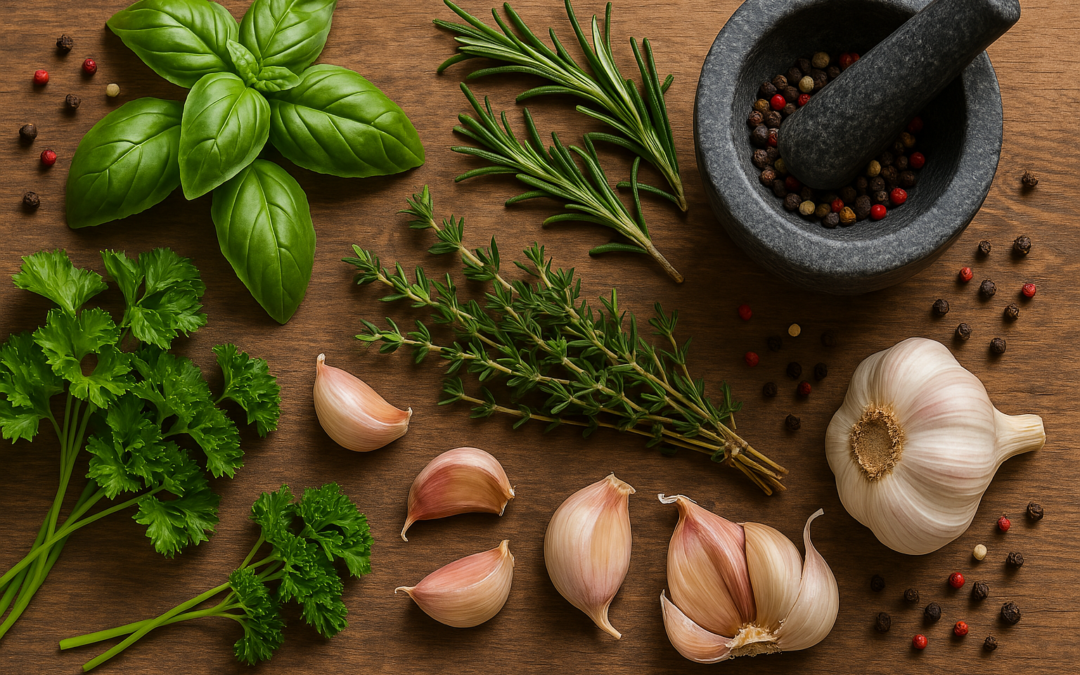
The Allure of Aromatics: Cooking With Fresh Herbs
Are you tired of bland, uninspired meals? Discover the allure of aromatics and elevate your cooking with fresh herbs.
In this article, we’ll explore the health benefits of using fresh herbs, introduce you to common aromatic herbs, and share techniques for incorporating them into your recipes.
Plus, we’ll guide you on pairing herbs with different types of dishes and offer tips on growing your own herb garden.
Prepare to unleash a world of flavors in your kitchen!
Health Benefits of Cooking With Fresh Herbs
You should frequently incorporate fresh herbs into your cooking because they offer numerous health benefits. Not only do they add flavor and aroma to your dishes, but they also pack a powerful nutritional punch.
Fresh herbs are rich in vitamins, minerals, and antioxidants that can boost your immune system, improve digestion, and reduce inflammation in your body. For example, basil is known for its antibacterial properties, while parsley is a great source of vitamin C. Rosemary has been shown to improve memory and concentration, and cilantro can help detoxify the body.
Common Aromatic Herbs Used in Cooking
When incorporating fresh herbs into your cooking, it’s important to be familiar with the common aromatic herbs used in various dishes. These herbs not only add flavor but also enhance the aroma of your meals.
Some of the most commonly used aromatic herbs include basil, rosemary, thyme, and cilantro. Basil is often used in Italian cuisine, adding a fresh and sweet flavor to pasta sauces and salads.
Rosemary is popular in Mediterranean dishes, providing a woody and pine-like taste to roasted meats and vegetables. Thyme is commonly used in French cuisine, adding a subtle earthy flavor to soups, stews, and marinades.
Cilantro is a versatile herb, commonly used in Mexican and Asian cuisines, adding a bright and citrusy taste to salsas, curries, and stir-fries.
Techniques for Incorporating Fresh Herbs Into Recipes
To enhance the flavors of your dishes and infuse them with aromatic goodness, consider employing various techniques for incorporating fresh herbs into your recipes.
The first technique is chopping herbs finely and sprinkling them over your finished dish. This method works well for delicate herbs like parsley and cilantro.
Another technique is to add herbs to your cooking oil or butter, allowing their flavors to infuse throughout the dish. This works especially well for robust herbs like rosemary and thyme.
You can also create herb-infused oils or vinegars by steeping fresh herbs in these liquids for a period of time. This adds a subtle herbaceous flavor to dressings, marinades, and sauces.
Lastly, you can also make herb butter by combining softened butter with finely chopped herbs, which can be used to add a burst of flavor to grilled meats, vegetables, or even spread on bread.
Pairing Herbs With Different Types of Dishes
Wondering how to pair fresh herbs with different types of dishes to enhance their flavors and create a culinary masterpiece? The key is to match the intensity of the herb with the dish you’re preparing.
For lighter dishes such as salads or seafood, delicate herbs like parsley, dill, or chives work best. Their subtle flavors won’t overpower the dish.
When it comes to heartier dishes like stews or roasts, robust herbs like rosemary, thyme, or sage can withstand the longer cooking times and add depth to the flavors.
For dishes with a Mediterranean flair, try using basil, oregano, or marjoram to bring out the vibrant and aromatic notes.
Additionally, consider experimenting with herb combinations to create unique flavor profiles that complement your dishes perfectly.
Tips for Growing Your Own Herb Garden
Enhance your culinary creations by cultivating your own herb garden. Not only will you have a steady supply of fresh herbs at your fingertips, but you’ll also save money and add a personal touch to your cooking.
To start your herb garden, choose a sunny spot in your yard or balcony that receives at least six hours of sunlight a day. Next, select your herbs based on what you enjoy cooking with the most. Popular choices include basil, rosemary, mint, thyme, and parsley.
Remember to water your herbs regularly, but be careful not to overwater them as this can lead to root rot. Finally, harvest your herbs by cutting the stems just above a leaf node, and enjoy the taste and aroma of freshly grown herbs in your dishes.
Incorporating fresh herbs into your cooking not only adds depth and flavor to your dishes, but also provides numerous health benefits. From boosting your immune system to reducing inflammation, these aromatic herbs are a great addition to any meal.
By experimenting with different techniques and pairings, you can create unique and delicious recipes that will impress your family and friends.
And if you have the space and time, why not try growing your own herb garden? It’s a rewarding and sustainable way to always have fresh herbs on hand.

Transform Your Cooking With Global Flavours
Do you want to take your cooking to the next level?
Discover the magic of spice blends and transform your dishes with global flavors.
From fragrant saffron to fiery chili blends, these spices will add depth and complexity to your recipes.
Get ready to impress your taste buds and elevate your culinary creations.
It’s time to spice things up and unlock a world of delicious possibilities in your kitchen.
Saffron: The Golden Spice
Discover the rich and vibrant flavor of saffron, the golden spice that will elevate your culinary creations to new heights.
Saffron is a prized ingredient, known for its distinct aroma, taste, and vibrant golden hue. It’s derived from the delicate stigma of the Crocus sativus flower, making it one of the most expensive spices in the world.
Adding just a few strands of saffron to your dishes can transform them into extraordinary culinary experiences. Its complex and earthy flavor profile adds depth and complexity to both savory and sweet dishes.
Whether you’re preparing a traditional paella, a creamy risotto, or a decadent dessert, saffron will infuse your creations with a unique and exotic taste that will impress even the most discerning palates.
Unlock the magic of saffron and take your cooking to a whole new level.
Exploring Saffron’s Culinary Potential
Unlock the culinary potential of saffron and elevate your dishes with its rich and exotic flavor.
This vibrant golden spice is known for its unique taste and aroma. Saffron adds a touch of luxury to any dish, making it perfect for special occasions or when you want to impress your guests.
Its distinct flavor profile is both floral and earthy, with hints of honey and hay. Saffron is incredibly versatile and can be used in a variety of dishes, from savory to sweet. It pairs well with rice, seafood, chicken, and even desserts like ice cream and cakes.
Just a pinch of saffron can transform your cooking and take it to a whole new level.
Saffron-Infused Recipes From Around the World
Try incorporating saffron into your culinary repertoire with these mouthwatering recipes from around the world.
Saffron, with its distinct flavor and vibrant color, adds a unique touch to any dish.
In Spain, you can indulge in Paella, a delicious rice dish infused with saffron, seafood, and various meats.
For something sweet, try Persian Saffron Ice Cream, a creamy treat with a delicate saffron flavor.
In India, you can savor the aromatic and flavorful Saffron Biryani, a fragrant rice dish cooked with spices, vegetables, and saffron-infused milk.
Or, explore the Middle Eastern cuisine by making Iranian Saffron Chicken, a succulent dish marinated in saffron, lemon, and spices, and then grilled to perfection.
These saffron-infused recipes will transport your taste buds to different corners of the world, leaving you craving for more.
Elevate Your Dishes With Saffron Delights
To enhance the flavors of your dishes, embrace the enchantment of saffron-infused delights.
Saffron, with its vibrant golden hue and distinct aroma, has been treasured for centuries in culinary traditions around the world. Adding a pinch of saffron can elevate your dishes to new heights of flavor and sophistication.
Whether you’re cooking a risotto, a paella, or even a simple cup of tea, saffron imparts a rich and complex taste that’s unparalleled. Its delicate floral notes and earthy undertones create a symphony of flavors that will leave your taste buds dancing with joy.
Unleashing the Flavorful Magic of Saffron
Enhance your culinary creations by harnessing the flavorful magic of saffron.
This exquisite spice, derived from the crocus flower, adds a distinctive taste and vibrant color to dishes, making it a coveted ingredient in many cuisines around the world.
Known as the ‘golden spice,’ saffron has a unique aroma and a taste that’s both floral and earthy.
Just a pinch of saffron can elevate your dishes to new heights of flavor and sophistication.
Whether you’re preparing a traditional paella, a creamy risotto, or a fragrant biryani, saffron will infuse your dish with its luxurious essence.
Soak a few strands of saffron in warm water or milk before adding it to your recipe, and watch as it releases its mesmerizing golden hue and tantalizing flavor.
Unleash the captivating magic of saffron and take your cooking to the next level.
Spice blends have the power to transform your cooking with global flavors.
From the golden hue of saffron to its culinary potential in various dishes, saffron has proven to be a magical ingredient.
By exploring saffron-infused recipes from around the world and incorporating it into your dishes, you can elevate your cooking and unleash the flavorful magic of saffron.
So why not add some spice to your culinary adventures and embark on a flavorful journey?
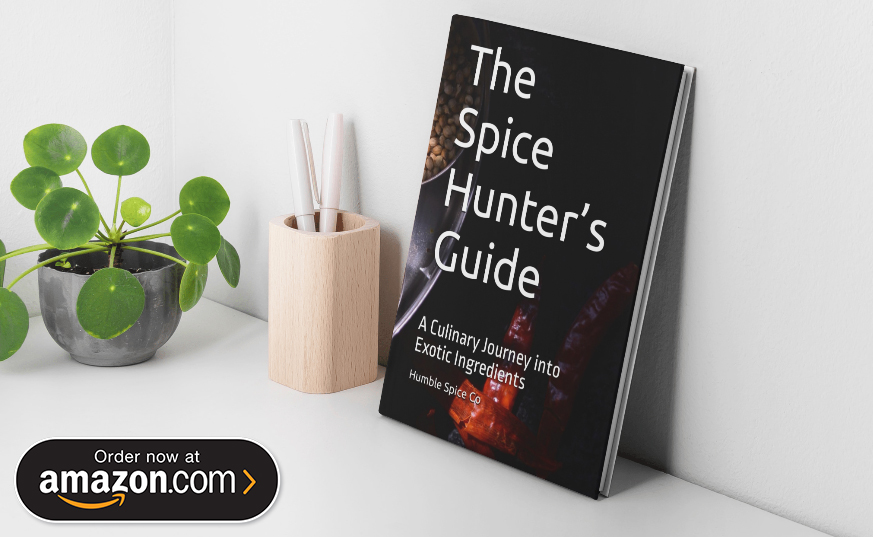
The Spice Hunter’s Guide: A Culinary Journey into Exotic Ingredients
Our book The Spice Hunter’s Guide: A Culinary Journey into Exotic Ingredients is now available on Amazon!
Order here: https://amzn.asia/d/1Vj86LW
In the rich tapestry of culinary arts, the allure of rare spices and exotic ingredients beckons to the adventurous gastronome, promising an unparalleled voyage of flavours. It’s a journey that transcends the mundane and leads us to uncharted territories, where every dish becomes a work of art, and every meal a symphony of tastes.
In a world where the familiar often takes center stage, we are drawn to the extraordinary, the rare, and the exceptional. This book is your passport to the extraordinary, a companion on a quest to discover the spices and ingredients that elevate your dishes to new heights.
We delve into the essence of culinary exploration, where the mundane gives way to the exceptional, the ordinary transforms into the extraordinary.
We take you through a journey in history and food covering:
Chapter 1: The Sensory Journey of Spice
Chapter 2: The Silk Road and the Origin of Spice
Chapter 3: The Global Pantry
Chapter 4: Spice and Ingredient Profiles
Chapter 5: The Art of Spice Blending
Chapter 6: The Science of Spice Flavour
Chapter 7: The Future of Rare Ingredients
Chapter 8: Table Talk
Chapter 9: The Finishing Touch
This book is more than a compilation of facts; it’s a conversation between enthusiasts. It is a journey, not a lecture. We strive to strike a balance between detailed information and engaging storytelling, ensuring that every page resonates with the spirit of culinary exploration.
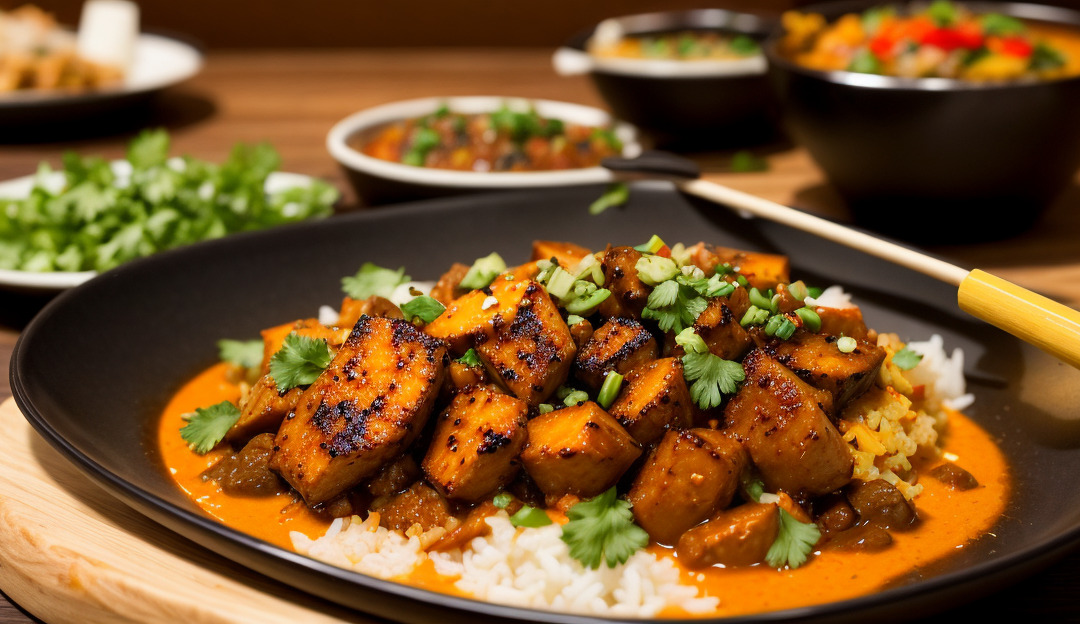
Transforming Staples Into Gourmet Feasts With Some Pantry Magic
Are you tired of the same old meals from your pantry? Look no further! With these tips you can elevate your cooking game using simple ingredients you already have.
Discover creative culinary ideas that will turn rice and beans into a culinary masterpiece, reinvent pasta classics with a twist, and unlock the hidden potential of canned goods and spices.
Get ready to wow your taste buds with these delicious and easy recipes using pantry essentials!
Elevating Rice and Beans
To elevate your rice and beans, start by adding a splash of vibrant lime juice to enhance their flavors.
The tangy acidity of the lime juice cuts through the richness of the beans and adds a refreshing zing to the dish. It brings a burst of freshness and brightness that takes your humble rice and beans to a whole new level.
Squeeze the juice of half a lime over the cooked rice and beans, and toss them gently to ensure that the flavors are evenly distributed. The lime juice not only enhances the taste but also helps to balance the dish, making it more enjoyable to eat.
Reinventing Pasta Classics
Get ready to reimagine traditional pasta dishes with a twist of creativity using pantry essentials.
Pasta classics like spaghetti Bolognese and carbonara can be reinvented in exciting ways by utilizing ingredients you already have in your pantry.
Instead of using ground meat in your Bolognese sauce, try substituting it with canned lentils or chickpeas for a vegetarian twist.
Add a burst of flavor to your carbonara by incorporating sun-dried tomatoes or roasted red peppers from your pantry.
Experiment with different types of pasta shapes and sizes to give your dishes a fresh look and texture.
Don’t be afraid to add herbs and spices to elevate the flavors and create a unique culinary experience.
With just a little imagination and some pantry staples, you can transform simple pasta dishes into gourmet feasts.
Canned Goods: From Ordinary to Extraordinary
Now let’s explore how you can elevate ordinary canned goods into extraordinary culinary creations.
Canned goods are often overlooked, but they can be the secret ingredient that transforms a simple dish into something truly remarkable.
Take canned tomatoes, for example. By adding a few herbs and spices, you can create a rich and flavorful tomato sauce that rivals any restaurant’s.
Canned beans can be the base for a hearty and satisfying chili or a deliciously creamy hummus.
And don’t forget about canned fish. With a little creativity, you can turn a can of tuna into a gourmet salad or a flavorful fish cake.
Spices: The Secret to Gourmet Flavors
Enhance your culinary creations with the secret to gourmet flavors: spices.
The use of spices can elevate a simple dish to new heights of deliciousness.
Whether you’re cooking a savory stew, a fragrant curry, or a sweet dessert, spices have the power to transform ordinary ingredients into extraordinary culinary experiences.
Just a pinch of cinnamon can add warmth and depth to your morning oatmeal, while a sprinkle of paprika can give your roasted vegetables a smoky kick.
Experimenting with different spice combinations can open up a world of flavor possibilities.
From the subtle heat of cayenne pepper to the aromatic notes of cardamom, spices are the key to unlocking gourmet flavors in your everyday cooking.
Dessert Delights From Pantry Staples
You can easily create delightful desserts using pantry staples.
With just a few simple ingredients, you can transform your everyday treats into gourmet delights.
Start by using flour, sugar, and eggs to make a basic cake batter. Add in some cocoa powder or vanilla extract for a rich flavor. If you have chocolate chips or nuts in your pantry, sprinkle them on top for extra crunch.
For a quick and easy dessert, whip up some homemade whipped cream using heavy cream and powdered sugar. Drizzle it over fresh berries or a slice of pie for a decadent finish.
Don’t forget about the power of pantry staples when it comes to creating delicious desserts that will impress your friends and family.
With a little creativity and some pantry magic, you can transform ordinary staples into gourmet feasts. Elevate your rice and beans with flavorful spices, reinvent classic pasta dishes with unique twists, and turn canned goods into extraordinary meals.
Don’t forget the secret weapon of spices for adding gourmet flavors to your dishes. And for a sweet ending, whip up delicious desserts using pantry staples.
So get cooking and let your pantry inspire your culinary creations!
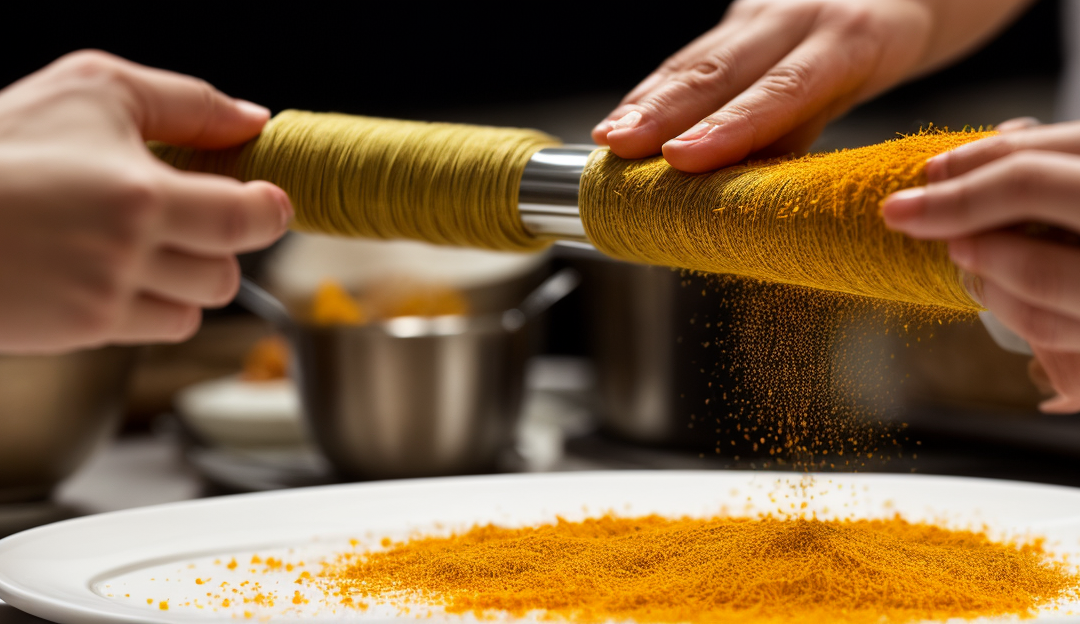
DIY Spice Blends for Customising Home Cooked Flavours
Are you tired of using the same old spice blends in your cooking? Spice up your dishes with your own unique creations!
In this guide, we’ll show you how to craft customized spice blends that will add a personalized touch to your favorite recipes. With just a few essential tools and ingredients, you’ll be on your way to creating culinary masterpieces that are bursting with flavor.
So, roll up your sleeves and let’s get blending!
Benefits of Creating Your Own Spice Blends
When creating your own spice blends, you can enjoy the benefits of adding a personalized touch to your dishes by experimenting with a variety of flavors and combinations.
By crafting your own blends, you have the freedom to control the intensity of each spice, allowing you to tailor the taste to your preference.
Additionally, creating your own spice blends ensures that you know exactly what goes into your food, avoiding any hidden additives or preservatives that may be present in store-bought blends. This allows you to make healthier choices and cater to any dietary restrictions or preferences.
Moreover, crafting your own spice blends can be a cost-effective option in the long run, as you can buy spices in bulk and create blends as needed.
Essential Tools and Ingredients for DIY Spice Blends
To create your own unique spice blends, you’ll need essential tools and ingredients. These are the building blocks that will help you customize and elevate the flavors of your dishes.
First and foremost, you’ll need a good quality spice grinder or mortar and pestle. This will allow you to grind whole spices and create your own blends with ease.
Next, gather a variety of whole spices such as cumin seeds, coriander seeds, peppercorns, and dried chili peppers. Whole spices have a longer shelf life and retain their flavors better than pre-ground ones.
Additionally, having a selection of dried herbs like thyme, rosemary, and oregano is essential.
Lastly, don’t forget about salt and sugar, as they can enhance the overall taste of your spice blends.
With these tools and ingredients, you’re ready to embark on your journey of creating your own personalized spice blends.
Exploring Different Spice Combinations and Flavors
Now that you have gathered the essential tools and ingredients for DIY spice blends, let’s delve into exploring a plethora of different spice combinations and flavors to elevate your culinary creations.
The beauty of creating your own spice blends is the freedom to experiment and customize flavors to suit your taste preferences. You can start by combining common spices like cumin, coriander, and paprika for a warm and earthy flavor.
Or, if you’re looking for something with a kick, try mixing chili powder, cayenne pepper, and garlic powder.
For a Mediterranean twist, combine oregano, thyme, and rosemary. Don’t be afraid to experiment with different ratios and spice combinations to find your perfect blend.
The possibilities are endless, and with each new combination, you’ll discover a unique flavor profile that adds a personalized touch to your dishes.
Tips and Techniques for Blending Spices Like a Pro
To blend spices like a pro, you can further enhance your flavor exploration by utilizing various tips and techniques.
One important tip is to start with whole spices and grind them yourself, as this will maximize their flavor. Invest in a good quality spice grinder to achieve the desired texture and consistency.
It’s also important to understand the flavor profiles of different spices and how they complement each other. By experimenting with different combinations, you can create unique and delicious blends.
Another technique is to toast your spices before blending them, as this enhances their aroma and brings out their natural oils.
Finally, always store your spice blends in airtight containers away from heat and sunlight to maintain their freshness and flavor.
With these tips and techniques, you’ll be blending spices like a pro in no time.
Storing and Using Your Homemade Spice Blends
Once you have created your unique spice blends, it’s important to store them properly and incorporate them into your dishes regularly for maximum flavor impact.
To store your homemade spice blends, use airtight containers that are kept in a cool, dry place away from direct sunlight. This will help maintain the freshness and potency of the spices.
Be sure to label each container with the name of the blend and the date it was made, so you can easily identify and rotate your blends.
When using your spice blends, start with small amounts and taste as you go. This will allow you to adjust the flavors and achieve the desired level of spiciness or intensity.
Experiment with different dishes and cuisines to fully explore the versatility of your homemade spice blends.
Creating your own spice blends can elevate your cooking to new heights. By experimenting with different combinations and flavors, you can add a personalized touch to your dishes that can’t be replicated.
With the right tools and ingredients, blending spices like a pro becomes easy and enjoyable. And with proper storage, your homemade spice blends will last for months, ready to enhance any meal with a burst of flavor.
So why not unleash your culinary creativity and start crafting your own unique spice blends today?
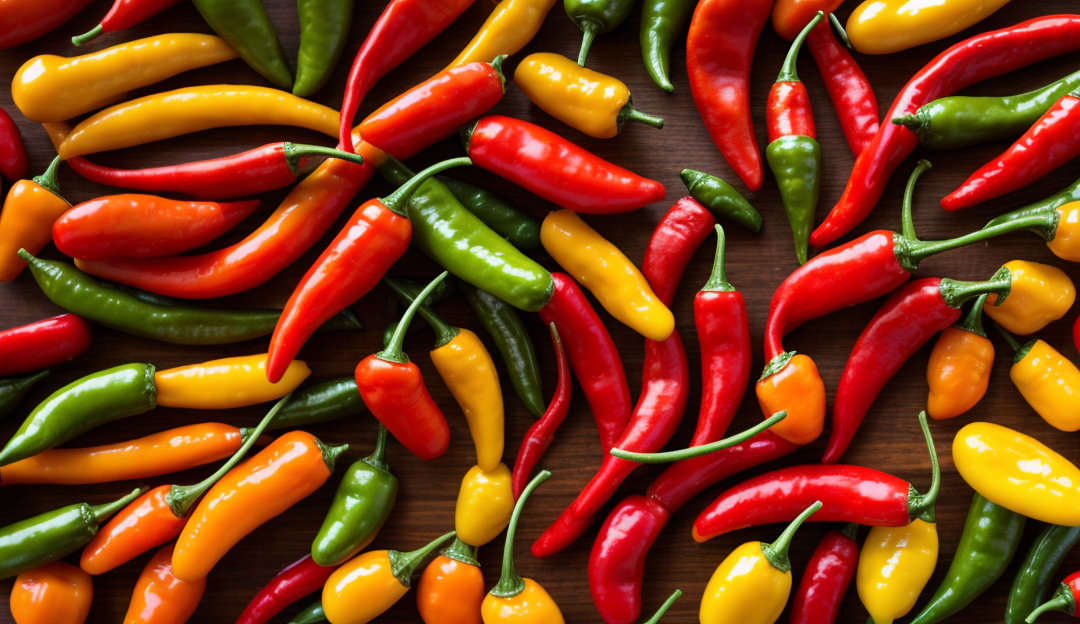
Mastering Spicy Dishes Without Sacrificing Balance
Are you a fan of spicy food but worry about overpowering the flavors? In this article, we’ll show you how to master the art of creating spicy dishes without sacrificing balance.
With our expert strategies, you’ll learn how to understand heat levels, pair spices for maximum impact, balance heat with sweetness, enhance flavors with acidic elements, and create delicious layers of spices.
Get ready to ignite your taste buds and elevate your culinary skills!
Understanding the Heat Levels
To understand the heat levels in spicy dishes, you need to first familiarize yourself with the Scoville scale. This scale measures the amount of capsaicin, the compound responsible for the heat in peppers. The higher the number on the Scoville scale, the hotter the pepper.
For example, a mild jalapeno pepper ranges from 2,500 to 8,000 Scoville heat units (SHU), while a fiery habanero pepper can reach up to 350,000 SHU.
Knowing the Scoville scale can help you choose the right level of heat for your dishes, ensuring they’re enjoyable without being overwhelming. It also allows you to experiment with different peppers and create unique flavor profiles.
Pairing Spices for Maximum Impact
Now that you understand the heat levels in spicy dishes, it’s time to explore how to pair spices for maximum impact.
When it comes to creating flavorful and spicy dishes, the key is to choose spices that complement each other and enhance the overall taste.
One effective strategy is to combine spices with contrasting flavors. For example, if you’re using a spicy chili powder, you can balance it out with the sweetness of cinnamon or the earthiness of cumin.
Another approach is to use spices that share similar flavor profiles. For instance, combining paprika, cayenne pepper, and black pepper can create a complex and intense heat.
Experimenting with different spice combinations will allow you to discover unique and exciting flavor combinations that will take your spicy dishes to the next level.
Balancing Heat With Sweetness
When balancing the heat in your spicy dishes, you can achieve a harmonious flavor profile by incorporating the right amount of sweetness. Sweetness helps to counterbalance the intense heat and adds depth to the overall taste. The key is to find the perfect balance so that the sweetness doesn’t overpower the spiciness.
One way to achieve this is by using natural sweeteners like honey or maple syrup. These ingredients not only add sweetness but also bring their unique flavors to the dish.
Another option is to incorporate fruits like pineapple or mango, which not only add sweetness but also provide a refreshing contrast to the heat.
Enhancing Flavor With Acidic Elements
To further enhance the flavor of your spicy dishes and maintain a harmonious balance, it’s important to incorporate acidic elements.
Acidic ingredients, such as citrus juices, vinegar, or fermented foods, add a bright and tangy flavor that complements the heat of spicy dishes. The acidity helps to cut through the richness and intensity of the spices, bringing a refreshing contrast to the dish.
Lime or lemon juice can be squeezed over grilled meats or added to salsas and marinades to add a zesty kick. Similarly, a splash of vinegar can be added to soups, stews, or stir-fries to balance out the heat.
The Art of Layering Spices
To create a well-balanced and flavorful spicy dish, start by layering your spices.
This technique allows you to build complexity and depth of flavor, ensuring that each spice shines through without overpowering the others.
Begin with a base layer of foundational spices such as cumin, coriander, or paprika to establish the flavor profile.
Then, add secondary spices like turmeric, cinnamon, or cloves to enhance and complement the base layer.
Finally, finish off with a touch of heat from chili powder, cayenne pepper, or crushed red pepper flakes.
By layering your spices in this way, you create a harmonious blend that tantalizes the taste buds with a perfect balance of flavors.
Experiment with different combinations to find your own unique spice blend that adds a fiery kick to your dishes while maintaining a well-rounded flavor profile.
Overall, mastering spicy dishes without sacrificing balance is all about understanding heat levels, pairing spices effectively, balancing heat with sweetness, enhancing flavor with acidic elements, and the art of layering spices.
By incorporating these strategies, you can create spicy dishes that maintain a harmonious flavor profile.
So go ahead and spice up your cooking with confidence, knowing that you can achieve the perfect balance of heat and flavor in every dish.
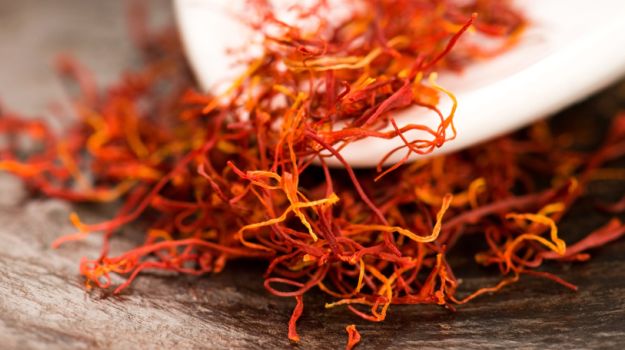
The Incredible History of the World’s Most Coveted Spice: Saffron
Saffron is a spice derived from the dried stigma of the flower of the saffron crocus (Crocus sativus), a species of crocus in the family Iridaceae.
The history of saffron cultivation reaches back more than 3,000 years. The wild precursor of domesticated saffron crocus was Crocus cartwrightianus. Human cultivators bred wild specimens by selecting for unusually long stigmas. Thus, a sterile mutant form of C. cartwrightianus, C. sativus, emerged in late Bronze Age Crete.
Experts believe saffron was first documented in a 7th century BC Assyrian botanical reference compiled under Ashurbanipal. Since then, documentation of saffrons use over the span of 4,000 years in the treatment of some 90 illnesses has been uncovered.
Saffron is the worlds most expensive spice for one good reason. In order to extract 1kg of saffron from crocuses, the stigmas of almost a quarter of a million flowers must be hand-picked, dried and bottled which is incredibly labour-intensive.
Description
Saffron, Crocus Sativus Linnaeus, is a genus in the family Iridaceae. Pronounced “SAF-ruhn”, saffron has been used for thousands of years as a seasoning, fragrance, dye, and medicine. The stigmas of the flower are harvested and processed by hand which is very labor intensive and the reason why Saffron is considered the world’s most expensive spice.
True saffron is considered a domesticated plant that has only a few related species growing in the wild. This makes it difficult to pinpoint its exact origins, some food historians believe it to be native to the area known as Asia Minor (the westernmost protrusion of Asia, which makes up the majority of what today is the Republic of Turkey) while others are of the opinion that it originated in ancient Persia (modern day Iran).
Saffron has .5% to 1% essential oil, primarily monoterpene aldehydes, terpenes and isophorone-relatedf compounds. Its color comes from carotenoid pigments, mostly the bright orange yellow, water soluble crocin.
Saffron is called za-faran (Arabic), fan huang hua (Mandarin), safran (French and German), zaaffran/kesar (Hindi), safuran (Japanese), acafrao (Portuguese), shafran (Russian) and azafran (Spanish). Saffron is also known as rose of saffron, crocus, and hay saffron.
History of Saffron
Saffron pigments have been found in prehistoric paints used to depict beasts on cave art that dates back 50,000 years in the area that is modern day Iraq. Saffron threads have been found interwoven into ancient Persian royal carpets and funeral shrouds that date back to the 10th century BC. Analysis of these saffron threads pints to them being harvested in Derbena, Isfahan and Khorasan, Iran.
Saffron was first documented in an Assyrian botanical reference compiled under Ashurbanipal, an Assyrian king (who reigned from 668-627 BC). Ashurbanipal was a strong warrior king who was also known for accumulating a substantial collection of cuneiform documents (one of the earliest systems of writing which was done on clay tablets) for his royal palace at Nineveh (located on the outskirts of Mosul in modern-day northern Iraq).
The earliest recordings of saffron in Greek culture dates back to Bronze Age (3200-600 BC). A saffron harvest is shown in the Knossos palace frescoes of Minoan Crete, which depict the flowers being picked by young girls and monkeys. Frescoes are the source of some of the most striking imagery and are a type of mural painting done upon freshly-laid, or wet lime plaster. This gives some of the first evidence that saffron was involved in long-distance trade.
Saffron’s appearance in South and East Asia has various accounts of how and exactly where it first arrived but the earliest Persian records suggest that after ancient Persia conquered Kashmir they had saffron and various spices sent to them to stock their newly built gardens. The first Persian saffron crocus corms were transplanted to Kashmiri soil and where harvested prior to 500 BC.
Saffron was also favored by Alexander the Great (356 – 323 BC) and his forces during their Asian campaigns. Saffron was added to teas and used to make saffron rice. Alexander also had saffron added to his bath water as he came to believe that it help heal his many wounds suffered in battle.
One of the earliest references to the use of saffron in Ancient Egypt had it used by Cleopatra (69 BC – 30 BC) and other Pharaohs as an aromatic and seductive essence. Because Egypt does not have the correct climate to grow the flower this also suggests that it must have been brought to the area from further north or the Persian Empire.
Saffron was introduced into Spain by the Moors who are credited with planting it throughout the southern provinces of Andalucia, Castile, La Mancha, and Valencia.
Saffron Cultivation
How much top quality saffron can be obtained from the flowers? The numbers are a little staggering. With only 3 stigmas per saffron flower it takes over 4,600 flowers (or 14,000 stigmas) to produce just one ounce of top grade saffron.
The saffron crocus blooms in the fall, producing fragrant, purple flowers 1” to 2” long. The flower produces three stigmas of saffron (sometimes called filaments), the three stigmas are attached to a white slender style, which, when dried, turns a pale yellow. If the style remains attached to the red stigmas, it will add 30%-50% dead weight to the saffron, which you end up paying for. Why exactly is that bad? The style provides no aroma, color or culinary value – it’s basically just filler.
The harvesting of saffron takes place from the end of October to the beginning of November. The rose of saffron blooms at dawn and once opened, should be picked the same day because once the flower opens it withers quickly and the stigmas lose their optimum aroma and color. This is why experienced saffron farms typically harvest the flowers between dawn and 10 a.m.
Once the flowers are picked, the stigmas or threads are carefully separated from the rest of the flower. The stigmas are then dried over heat to remove moisture and lock in the highest quality saffron (aroma, color and flavor) possible.
Saffron must be grown in an extreme climate where it is dry and hot in the summer and cold in the winter. Where your saffron comes from and who packs it is where the real quality of the saffron comes into play. Saffron is grown primarily in Iran, France, Greece, Kashmir (the region between India, Pakistan and China), Spain, Turkey and the US.
The best quality saffron is cultivated in Iran, Kashmir and Spain.
What’s More important — Farmers or Packers?
Because saffron is the most expensive spice in the world it has naturally been prone to unscrupulous handlers who for hundreds of years have mixed lesser quality saffron or other spices with top quality saffron and then tried to pass it off as higher grade saffron. This makes the packers of saffron and not the farmers the key players in the quest for the best quality saffron.
So How Can You Tell Top Quality Saffron?
Well first you should learn how to recognize a lesser quality saffron. In addition to the red stigmas you should also look for lots of white or yellow strands and even a mushy texture (this is due to a higher water moisture content used to add weight to the product). As mentioned earlier the yellow is from the style which provides no flavor or aroma – too much yellow or moistness are both sure signs of a lower grade saffron.
Top grade saffron possesses a deep red color, is dry to the touch and the stigmas will be 3/8” to 1/2” in length.
Saffron is graded by the International Standard Organization (I.S.O.). Saffron is graded via laboratory measurement for color (crocin), flavor (picrocrocin) and aroma (safranal) content. Samples are assigned grades by gauging the saffron’s color content. The higher color content (also known as coloring strength) signifies a greater color concentration and intensity.
The I.S.O. classifies saffron into four grades of Coloring Strength with Category IV being the lowest quality followed by Category III, Category II and then Category I (highest quality). These coloring strength grades range from lower than <99 (applies to all Category IV saffron), 100-149 (for Category III), 150-189 (for Category II) and 190 or greater (for Category I). The market prices for saffron are determined by these ISO scores.
While this grading is now the standard many sophisticated home cooks and top quality chefs reject such lab test results. They look at saffron more like wine connoisseur and prefer to sample saffron threads for taste, aroma, pliability and color.
Now while we also prefer to let our noses and taste buds make the final determination for us we also recognize the importance of uniform testing that the I.S.O. grades provide as they’re less arbitrary (easier to do side-by-side comparisons). Our Saffron is the highest rated Category I and grades at 260 on Coloring Strength and has as an unmistakable aroma that is sharp and floral. The taste is light, cutting, warm, bitter and it then slowly dissipates from your palette.
Helpful hint: You should protect your Saffron from light and moisture to maintain its superior quality and so we highly recommended that you store your saffron threads in an air-tight jar out of direct light and away from heat.
How Much Saffron to Use
So how much saffron should you use? Most great chefs believe saffron is more about the aroma than the taste and if you can taste the saffron in a dish, you’ve added too much. A good rule of thumb is to use about three strands a person. There are approximately 463 threads (3/8” to ½” in length) per gram of saffron so 1 gram would yield approximately 150 servings.
Cooking with Saffron
Saffron should be used sparingly and when used in larger amounts tends to make dishes bitter. It’s frequently made into a tea using milk or water before adding to a dish (see below on how to make saffron tea).
The English add saffron to breads, cakes and scones. It’s also used in fish based dishes in France (bouillabaisse) and Spain (zarzuela de pescado). Saffron stars in rice dishes in India (biryani and pillaos), Iran (zafran pollous) and Italy (rissotto Milanese).
Saffron works exceptionally well in both savory and sweet dishes including chicken, cream sauces, curries, flans, garlic, ice cream, milkshakes, polenta, puddings, rice, sauces, seafood, shellfish and soups.
Saffron pairs well with almonds, anise, brown sugar, cardamom, carrots, cashews, cinnamon, cloves, coriander, cumin, eggs, fennel, ginger, milk, mint, nutmeg, paprika, pepper, raisins and spinach.
Some of our favorite recipes using Saffron are Spanish Saffron Chicken, Black Beans with Saffron & Peppers and Roasted Peppers with Saffron.
Making Saffron Tea
In order to get your money’s worth with saffron you should understand how to make “saffron tea” instead of just adding saffron threads to your recipe. A saffron tea is also known as “steeping” saffron. Think of it exactly as you would when making any tea — the longer your saffron steeps, the stronger its aroma, color and flavor will be. Saffron’s full flavor can be released effectively in hot liquid such as broth, milk, water or at room temperature with citrus juice, orange blossom water, rosewater, vodka, white wine or white vinegar.
The amount of liquid used is not critical and if your recipe doesn’t call for one of the aforementioned liquids then as little as one or two teaspoons of hot water will be fine. Add the saffron threads either whole or break them up by rubbing them together with your fingers and add to the liquid for at least 20 minutes before you add this “saffron tea” to your recipe. Don’t remove the saffron threads from the liquid as they will continue to release saffron’s signature aroma, color and flavor for up to 24 hours.
We’ve found that leftovers with saffron are even more flavorful because of this continued infusing process. You’ll also find that by making your own “saffron tea” and by using our highest quality Category I saffron that just a little goes a long way.
What Does Saffron Taste Like
The deep red or orange types are the best quality saffron and these have a warm, floral aroma with a delicate, honey-like, earthy taste with bitter back notes.

